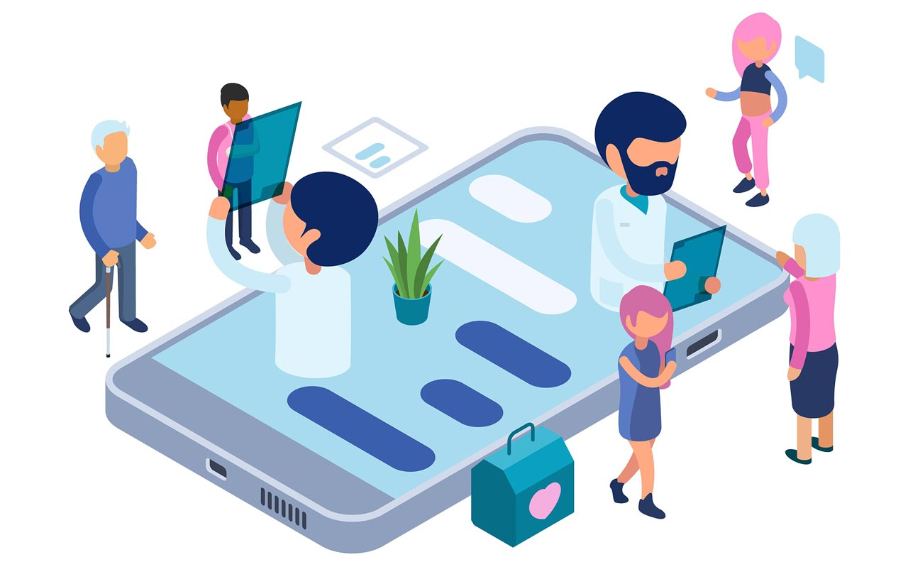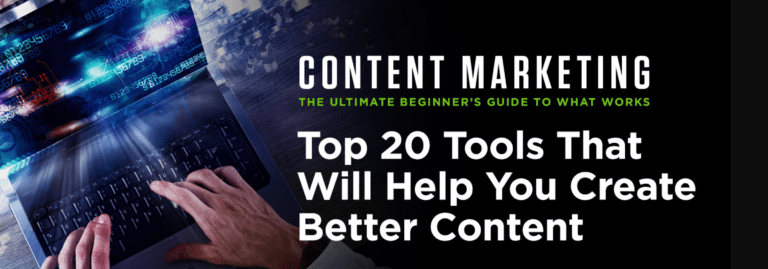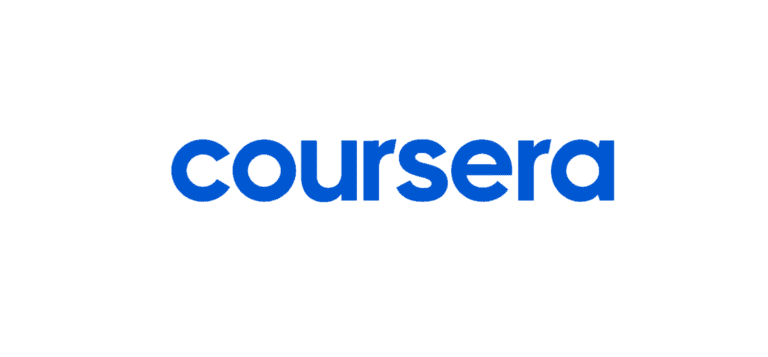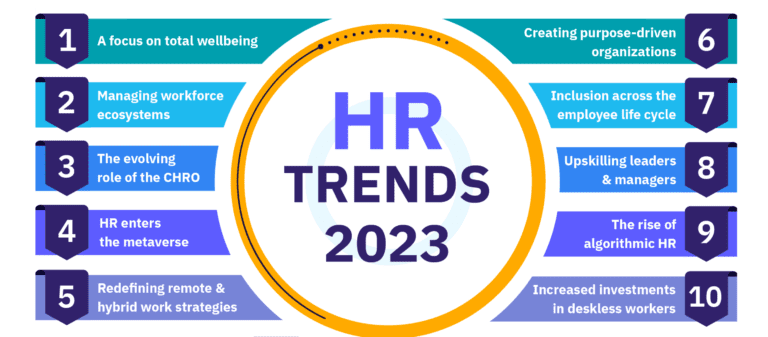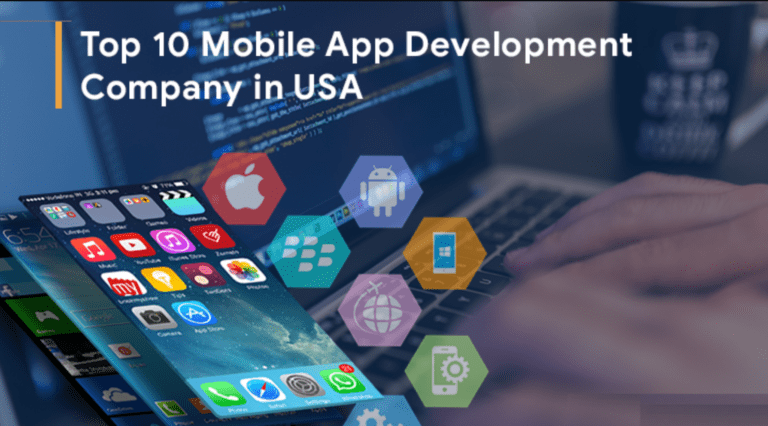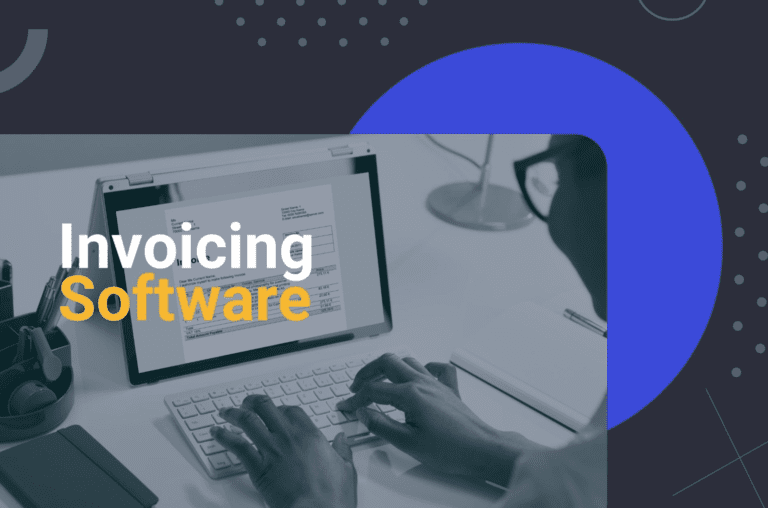Healthcare Software 2022
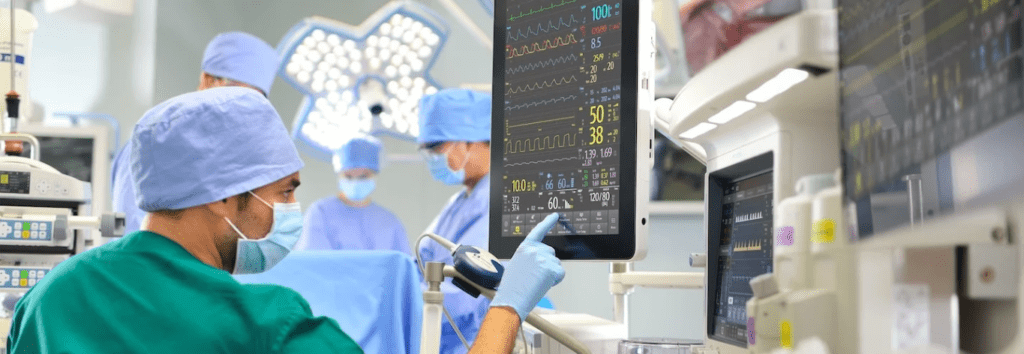
The Healthcare Software Landscape
According to a 2019 industry forecast by Meticulous Research, the healthcare IT market is expected to grow at a CAGR (compound annual growth rate) of 13.8% between 2019 and 2027, reaching a value of $511 billion. .
However, as this report was published before the coronavirus outbreak, the number is likely to be even higher, with healthcare apps becoming more and more popular during pandemics.
In the following article, we are going to guide you through 13 types of healthcare software available in the market. We will show examples of popular medical software developed and used by organizations, as well as examples of healthcare apps that are concerned with the health and well-being of individuals.
Thirteen of the most popular types of healthcare software
1. Electronic Health Record (EHR) Software
EHR software is one of the most popular (if not the only) types of software used by hospitals and clinics. In many ways, it is similar to CRM, only adjusted to the medical industry.
EHR software collects information about patients — for example, medications they take, doctors’ recommendations, and procedures they’ve had in the past.
Many programs also include a financial module for invoicing and payment, and a separate patient portal, which allows patients to access their consultation history, medical records and prescriptions.
The two most popular types of EHR software are:
Electronic Patient Record Software (EPR) – Used internally by hospitals to store and process their patient information.
Electronic Medical Record Software (EMR) – Used to store data such as types and dosages of medications, past and planned procedures, and patient recovery course data. EHR
EHRs, or electronic health records, are used to digitally store patient information. It is used by clinics and hospitals to store a patient’s comprehensive medical history. Many governments are moving forward with strategies to mandate EHRs.
Compared to paper records, these records offer an efficient, secure, and easily accessible way to store medical records. Electronic records do not carry the risk of losing medical history. It also prevents duplicate medical records since there is only one file that is modified over time.
Electronic health record or EHR software is used by clinics and hospitals alike and is usually combined with hospital management software.
Examples: eClinicalWorks, Allscripts
2. Medical database software
Like electronic health record software, medical database software stores patient histories and treatment plans. However, unlike EHRs, databases are categorized by disease, not patient profiles.
Medical database software helps doctors in two important areas:
Making better treatment decisions by referencing a patient’s case with similar cases.
Educate yourself by reviewing the medical aspects of a disease.
For example, a dermatologist can use this type of software to browse all patients diagnosed with atopic dermatitis and compare their symptoms, treatment and recovery plans.
3. Medical Research Software
Medical research software is used for two primary purposes: teaching and sharing research with the medical community. This type of software is commonly used to train medical staff and assist in diagnosis if such clinical cases between patients cannot be referred internally.
Every health care institution is constantly seeking unique health care experiences based on the exceptional case: every patient is unique, even if their symptoms are similar. Medical research software aims to share such experience. Health care, just like a No other applied science ever stops researching to teach medical students and advance the competence of doctors.
Although medical research software is among the most focused programming products in the digital world, its importance cannot be overstated: in many cases, accurate diagnosis and thus, appropriate treatment of patients depends on medical research software.
Medical Research Software Pub
4. Medical diagnostic software
Medical diagnosis software for doctors allows them to exchange anonymized patient records to fill in any information gaps that prevent them from providing an accurate diagnosis. This type of software often leverages artificial intelligence (AI) to analyze all available patient data and generate potential diagnoses.
Medical diagnostic apps are also available for individuals. Such apps allow users to check whether their symptoms require a visit to the hospital. Such diagnostic apps have become popular during the COVID-19 pandemic. Another type of diagnostic software is targeted at healthcare professionals. AI diagnostic software can help doctors collect and analyze data and determine non-specific symptoms of disease, aiding in faster diagnosis and research. All anonymous information may be shared between health care institutions. We can distinguish between two types of medical diagnostic software: apps for patients, and a more complex type: diagnostic software for medical professionals.
Source: Google Play Store
Examples: Human DX, OSP Labs, Covid Symptom Tracker
5. Medical imaging software
Medical imaging and visualization software is primarily used to create MRI/CT/PET scans and design 3D models.
Medical 3D imaging software allows:
- Human Anatomy 3D Modeling. Such programs allow medical technicians to tailor models to individual patients. For example, 3D modeling software is used to create and print out a real-life model of a patient’s teeth before a planned orthodontic treatment.
- Design and printing equipment or body parts. This software is used to print elements of medical devices or body parts, such as prostheses or coronary stents required for heart surgery.
Examples: Materialize, Wipro
6. E-prescribing software
More and more countries around the world are moving to electronic prescriptions, which also means that e-prescribing software is becoming a necessity for doctors.
The software allows medical professionals to track, renew and cancel prescriptions for their patients. It is also integrated with the National Drug Reference Database. E-prescribing software may vary from country to country as it depends heavily on government regulations. However, the underlying value does not change. E-prescribing software allows doctors to not only write new prescriptions but also track the history of prescriptions, renew or cancel them if necessary. In some countries, the software enables direct contact with the pharmacy of your choice for convenience.
In general, E-Prescriptions software increases safety and time for patients and doctors by allowing doctors to check for any conflicts with medications already taken.
Slowly but steadily, medical prescriptions are being converted into digital format. The real motivation is the facility to change or extend the prescription with a few clicks. E-prescribing benefits both patients and doctors as e-prescribing software makes the prescribing process much easier. With this type of medical business software, issuing, renewing or suspending a prescription only takes a few minutes. The day is not far when e-prescribing will become the standard in the global healthcare sector.
Example: MediTab, ScriptSure
7. Telemedicine Software
Telemedicine is a truly booming industry, with a market value expected to reach $64 billion by 2025 – and that’s just the data from the United States! What makes it so successful is the convenience for doctors and patients alike.
Telemedicine software allows healthcare professionals to hold appointments with patients online, either through a web browser or a mobile app. In some software, the video conferencing feature is complemented by an e-prescription and billing module.
Telemedicine, i.e. online doctor consultations via the web and mobile apps, reached full demand during the 2020 pandemic when the usual healthcare chains were disrupted, and many people stopped seeing their doctor regularly. Could not be taken. This demand proved to be a catalyst for the global digital healthcare revolution.
Now, the need for telemedicine may have dipped to an all-time high, but this type of medical app has established its position in digital healthcare. CoVID-19 broke the main barrier for remote consultation providers, mainly: how to encourage doctors and patients to adopt the technology quickly. More and more telemedicine apps and services appear on the market, and they offer multiple features available within one platform: from in-app video conferencing, to file transfer (for patient test results), to payment.
If you want to learn more about telemedicine, download our 2021 Digital Healthcare Trends report to see how Docplanner, the world’s largest healthcare platform, has implemented its telemedicine service amid the pandemic. Telemedicine is a platform that allows healthcare professionals to communicate with patients remotely. This software is used to facilitate the delivery of online medical services. Due to the rapid development of technology, today’s telemedicine systems are essentially virtual clinics that involve multiple clinical processes such as diagnosis, scheduling appointments and others.
Telemedicine Software Healthcare
Source: Capterra
Examples of telemedicine applications: Doxy.Me, ZingTree
8. Appointment scheduling (booking) software
Booking software helps hospitals, clinics and medical practices manage their appointment system online. Typically, the software consists of a patient panel that allows individuals to schedule appointments through an app or website.
Often, it also includes email notification systems and automated reminders for doctors and patients about upcoming appointments.
Example: SimplyBook.Me
9. Medical Billing Software
This software helps hospital accounting departments to keep track of patient receipts, payments, and any other financial operations. It is often integrated into larger systems, such as EHR or hospital management software. Billing software is dedicated to financial operations in healthcare institutions. It helps manage invoices, receipts, and insurance claims, and allows all transactions. Healthcare billing software is still available as stand-alone apps, but many hospital management systems also offer this feature. It is also called medical billing software. It is a software program that automates the billing process in the healthcare sector.
In general, billing software streamlines the billing process, including billing to the patient, the patient’s insurance provider, and other related parties. By using billing software, medical expenses of all patients can be captured instantly and organized efficiently. It also helps in improving the financial flow of the healthcare facility. Although they are now integrated into hospital and practice management systems, they still qualify as stand-alone systems.
Example: Epic Care
10. Hospital Management Software
Hospital management software helps hospital management in day-to-day operations. These types of programs usually help with the automation of accounting, medical billing, claims, outpatient management, inventory, bed management and others.
Hospital management software often integrates with EHR software to help keep track of patient records simultaneously.
Hospital management software provides information and management capabilities to three stakeholder groups in a hospital: management, physicians and other health care professionals, and patients.
HMS often en It includes two separate portals, one with management-oriented features, and one portal available for patients. The administrative panel includes all the administration and health information a hospital needs – from food and medication management, room booking and scheduling, doctors’ timetables, and their scheduled appointments. But also completely mundane elements like laundry management, utility costs, water and electricity consumption, supply inventory, etc. The management panel contains all the administrative and health-related information a hospital needs, including medication and food management, room booking and scheduling, doctor itineraries, and booked appointments. However, there are also purely mundane elements such as utility costs, laundry management, electricity and water consumption, supply inventory, etc.
The portal for patients must include: digitized patient registration forms, all admission information (this is often synchronized with electronic medical records), in some cases, patient billing information, insurance, admission information , procedures, doctor’s appointments, and all medication and prescription information.
Hospital management systems not only improve the overall productivity of hospitals, streamline routines, but also improve the patient experience during any interaction. HRS also allows hospitals to collect and analyze valuable data on all aspects of their activity.
Hospital management software offers insights and management capabilities to multiple stakeholder groups in a hospital: administration, patients, and licensed healthcare professionals.
HMS often has two different portals, one for administrative capabilities and one for patients.
A patient portal contains an electronic patient application form, all admission details (often synced with electronic medical records or EMR software), patient payment details, medical coverage, updates on admissions, medical procedures Includes car, hospital appointments, and all medication and prescription information.
Example: Availability
11. Medical device management software
This type of software aims to free hospitals and medical practices from manual stock taking and equipment maintenance.
Medical equipment management software supports the efficient functioning of clinics such as automated maintenance scheduling and inventory alerts.
Example: In order
12. Health tracking apps
In 2019, the global mHealth (abbreviated ‘mobile health’) app industry was worth $37 billion.
A major share of the market can be attributed to the following app categories:
- Fitness – For example, the popular 8 Fit app.
- Diet – For example, Fitatu Calorie Counter and Diet.
- Meditation and stress reduction – for example, the incredibly popular calm and glow apps.
There are also a growing number of apps that integrate with wearable IoT devices to source and analyze consumer health data. Some of the most popular types of sleep trackers are wristbands (for example, FitBit), jewelry (for example, health tracking AuraRing), glucometers, and thermometers (for example, menstrual tracking). used for – for example, the Kandara app).
13. Personal Health Record Software (Medical Diary)
Unlike health tracking apps, most of which are used to maintain a healthy lifestyle, personal health record software serves a different purpose – disease monitoring.
This type of software works like a medical diary – and can be kept on a patient’s device or integrated with doctor or hospital software.
A great example that demonstrates how personal health record software works is the Tulipa app, designed for patients with Parkinson’s disease. In the app, patients note any symptoms, sensations, medications, or treatments, and can create a health report before their next doctor’s visit.
This type of software can help a patient recover, or alert medical staff to a patient’s deteriorating condition at the first signs. Instead of tracking lifestyle choices like regular exercise or meditation, personal health record software focuses on disease monitoring. Patients can submit regular updates in the form of diary entries and provide powerful insights to their healthcare provider.
A notable example of this type of technology is the Tulipa app. Parkinson’s patients can use the software to monitor their condition and allow their doctor to provide the most appropriate care.
Digital acceleration in healthcare in 2022 beyond

It’s safe to say that the healthcare software market is booming. No wonder; Digitalization of healthcare brings many benefits – improved efficiency, cost reduction, and better control of finances and patient data. With the increasing digital acceleration of medical services worldwide and the growing user base of online health tracking apps, the industry is likely to grow.
16 Most Popular Types of Healthcare Software (Updated)
Digital transformation in healthcare
Even before the pandemic, the healthcare IT sector was forecast to reach US$326.1 billion in 2021 and is still expected to reach US$662 billion by 2026.
Healthcare can be one of the most complex industries to digitize because it involves so many stakeholders: from hospitals and medical centers, through doctors, pharmaceutical and research companies, to patients themselves. The logistics of healthcare apps have always been the most complex and complicated (Learn How to Design and Develop a Healthcare App). Some countries are moving faster than others, such as Germany, which has been a year since allowing payments for digital products with the Digital Healthcare Act – DVG.
Post-pandemic, we are also seeing some barriers coming down (barrier to entry, barrier of digital skepticism among some stakeholders). Healthcare stakeholders around the world finally agree that digital is the way forward. Let’s dive in and see what kind of healthcare software is revolutionizing the industry and the future of healthcare app development.
Electronic Health Records (EHR)
Electronic health records (EHR) are perhaps the most popular and most important type of healthcare software. EHR systems store patient data: medical and family history, laboratory and other test results, history of prescribed medications, and more.
The most important feature of an EHR is that patient health information can be created and managed by authorized providers, and then shared with other providers in multiple health care organizations. This not only automates and streamlines providers’ workflows, as they don’t have to collect the same information from the same patient over and over again, but also visibly improves patient care. EHRs reduce errors, improve patient safety, and support better patient outcomes.
Some EHRs not only record a patient’s medications and allergies, but also automatically check an integrated drug database when a new drug is prescribed to alert the physician of a potential conflict or allergy. These often include a finance module for invoicing and payment with billing information, and all: a separate portal for the patient to access their data.
Overall, EHRs reduce the risk of data duplication, loss of data, or critical patient health information. They are also cost-effective compared to paper medical records, which are more likely to be duplicated, illegible, or destroyed over time.
EHRs are used in both clinics and hospitals and are typically integrated with internal hospital/clinic management software.
Remote Patient Monitoring (RPM)
Remote patient monitoring (RPM) is capable of collecting patient data outside of healthcare facilities (clinics or hospitals), and as a result, obtaining more complete information about the patient’s health, or that data. Also helps in remote diagnosis based on Remote patient monitoring software can also alert the doctor or clinic if any abnormalities are detected. Like telemedicine services, remote patient monitoring gained momentum during the pandemic when old health management processes were disrupted.
Some remote patient monitoring technologies include heart rate and blood pressure monitors, glucose and blood oxygen meters, wearable ECG monitors. In general, RPM technology and devices can visibly improve in-home health care services for people with chronic illnesses, people recovering from surgery, and elderly patients.
Healthcare CRM software
Healthcare customer relationship management (CRM) software helps medical practitioners, clinics maintain relationships with patients. It doesn’t differ significantly in purpose from CRMs in other industries, as it handles sales of services, registrations for services, and personalization based on data provided.
Healthcare CRMs provide data for the clinic’s day-to-day work, as they can store clients’ data: medical history, visits, bills. They are able to send automated notifications to patients about upcoming check-ups or prescription refill visits. Collectively, they aim to streamline all clinical administrative tasks and generate data-driven results faster. Thanks to CRM, a clinic is able to better monitor patient satisfaction, quickly identify recurring problems, and automate mundane administrative tasks.
Appointment Booking Software
Appointment booking software is used by doctors, private clinics and more recently, hospitals. Typically, it consists of two panels, a separate patient-facing panel and a management panel (on the clinic side). Its main purpose is pretty self-explanatory: it’s to streamline the process of booking a doctor’s appointment. Patients can easily book an appointment, get notifications about it, provide relevant information to the doctor in advance, and also reschedule or cancel the appointment.
From the management side, it allows clinics to transparently and easily analyze their doctors’ schedules. For clinic receptionists, this is a good way to streamline their mundane tasks of confirming and rebooking all scheduled appointments.
Health tracking apps
Health tracking apps are definitely the broadest group of healthcare software, as they can include: physical activity tracking and movement tracking, dieting and weight loss, and recently the very popular Genre: Mental Health & Wellness Apps.
The argument that these are quasi-medical apps and not directly linked to professional medical software is, of course, outdated. Especially in light of Germany paying for digital health apps, in other words: allowing doctors to prescribe digital apps as part of their patient’s treatment.
Health tracking apps for consumers have great potential to not only popularize their care, but also serve as a data source for patient health information to drive personalized healthcare. . Often they are companion apps to wearable apps, the most popular being the Apple Watch, Fitbit for your comfort data like movement, heart rate, sleep. But not exclusively: There are also rings, necklaces, and other bracelets created by startups that go beyond that and are aimed at fertility (measuring your body temperature, and specific days of your period). ), to help with diabetes etc.
Clinical trial management software
Clinical trial management software enables medical professionals to accurately plan, track and manage their clinical studies. These are often web-based solutions that ensure compliance, monitor patient enrollment or recruitment, and manage finances. CTM software provides flexibility, often allows real-time collaboration, and, thanks to being web-based, can be accessed anywhere and anytime by medical teams, without the need for any other software. It can be accessed. This is also a key benefit of clinical trial management software: it provides a central and single repository for all clinical trial data, improving data collection, quality and consistency.
Mobile health (mHealth) apps
Although initially considered too disruptive by some healthcare workers, it seems that mHealth apps are here to stay. They make it easy for patients to complete a variety of administrative tasks, including paying their medical bills, booking new appointments, and completing consultations with a nurse or doctor. A good mHealth app allows patients to access a variety of telehealth services.
A great aspect of these apps is their integration with EMR/EHR software. With consent, healthcare professionals can access the medical records they need without leaving their conference call with a patient.
This information can then be shared seamlessly with relevant parties for referrals, prescriptions and more. When integrated with local or international infrastructure, mHealth apps can be the best kind of disruption – a new digital force redefining the way patients access their healthcare.
There are currently two types of mHealth apps on the market – those that serve as commercial tools (e.g. mental health platform Unmind), and those in the public domain, such as the UK’s Patient Access app leveraged by the NHS is done
Although these applications are not directly related to “professional” medical software, they serve as additional sources of health data.
One of three categories: fitness, diet, and wellness, or integrate functions from each.
They are often accompanied by wearable technology that can collect more reliable health data such as pulse rate and sleep quality or even act as thermometers and glucometers. If apps were ever to be synced with real health records, they could subsidize them with more information.
Appinventive has successfully developed a platform that helps users create comprehensive health records, find caregivers and connect with people in the healthcare community. The Health-ePeople application can bring together data from 200+ devices and apps, connecting sick family members to medical care providers.
Distance medical training
Patients aren’t the only ones who benefit from the variety of telehealth services out there. Medical professionals are also benefiting from an abundance of new technologies. Training and education are two areas that have grown rapidly in recent years.
Integration with tools such as virtual or augmented reality can help students directly interact with subject matter content. Course content, feedback, and additional training exercises can all be accessed remotely. Surgery training is one area that seems to benefit the most from AR and VR solutions. Osso VR is a perfect example of this. This solution enables future surgeons to learn and practice as much as they need.
Medical imaging
Medical imaging is a type of telehealth technology that enriches existing datasets with data derived from images. In many cases, AI and machine learning are used to analyze data better than a single human can.
An MRI or PET scan taken in Italy can be sent to a clinic in the United States and an accurate analysis and possible diagnosis can be returned within hours. As a result, even those suffering from extremely rare conditions will have the opportunity to receive a proper diagnosis. Given all of the above, it’s clear that the potential for B2B integration is huge here. Medical imaging software processes CT, MRI, and PET scans and can also be used to generate 3D visualizations relevant to treatment. Before performing a procedure, surgeons, for example, estimate a 3D model of a particular patient on an MRI scan.
Medical imaging software is also used in printing and designing medical devices such as implants and prostheses. As 3D printing becomes more widespread and complex, it will likely become an increasingly important application for medical imaging software.
Medical Research Software
Medical research platforms serve as a database that gathers critical medical literature, reviews and journals, backed by thorough research. Such platforms allow clinicians to apply the latest data for patient diagnosis and further treatment.
The main purpose of the software is to educate the medical staff and provide them with access to the latest information in medical fields. Additionally, doctors can share information about unusual symptoms for further research.
Medical software is driving the digital transformation in healthcare.
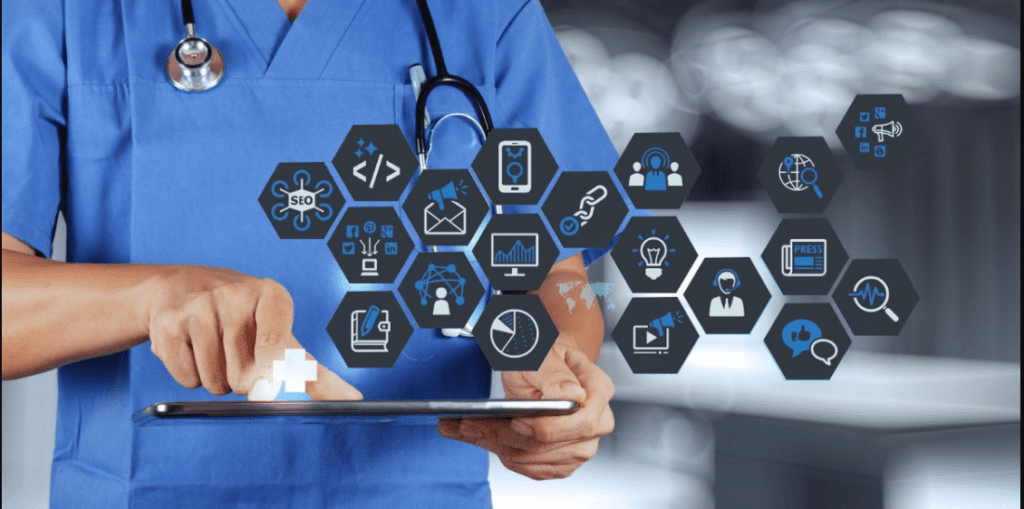
Digital innovation will impact the healthcare industry more, not less. With the underlying barriers to digital health adoption by both practitioners and patients reduced due to the pandemic, and governments seeing digital as a key factor in building a more equitable and efficient future, we only see more disruption. Expect pouring technology to come.
Medical software companies are involved in building and delivering products, systems, services or solutions within the medical space. These companies address numerous customer needs.
Key takeaways
Companies in the medical software space provide many solutions for related companies, including networking and record keeping solutions as well as software for medical research.
Investors seeking industry exposure can find it through publicly traded companies, such as Cerner or Allscripts.
However, care must be taken because many companies have other businesses and operations, some in diverse, unrelated fields.
Medical record keeping
These are software and services for use by organizations of any size, from an individual doctor’s clinic to large hospitals or even government organizations that hold a country’s biometrics.
Medical Practice Management
Used to enhance and streamline medical practice processes, from booking appointments to printing prescriptions to billing and payment, these applications can be used in individual physician offices and large hospitals.
Networking Solutions
These software applications are used for a variety of purposes, such as connecting different medical entities (eg, patients to hospitals or drug companies to medical representatives, pharmacies, labs, etc.).
Medical services through web portals
These portals range from a simple business listing on the website for the clinic to appointment booking to promotional and advertising solutions. These ready-made products can be purchased as a custom theme for a new website or as a recurring service to provide promotion, advertising, and appointment booking.
Hospital administration
These are software and services that support various operations in running and managing large hospitals. An individual doctor’s clinic may have enough software to keep medical records, but a large hospital needs multiple doctor’s scheduling, inventory management of various equipment in the hospital, its billing and payment systems, among other modules. will also be needed. Used by hospital security staff.
Software for operating medical instruments
An electrocardiogram device may be made by Company A, but the software that facilitates its operation may be made by Company B.
Software for Medical Research
The chain focuses on providing software, applications and systems to medical research companies, with the aim of simplifying and automating their research work.
Top Publicly Traded Medical Software Companies

McKesson Corp.
NYSE-listed McKesson, through its technology solutions segment, provides software, services and consulting to “hospitals, physician offices, imaging centers, home health care agencies, and payers” and patients. , offers connectivity services to streamline communication between providers, payers. Pharmacies and financial institutions. It has a market cap of $28.4 billion and an institutional holding of 86%.
Cerner Corp.
NASDAQ-listed Cerner Corp has a market cap of $22.8 billion. It is a leading provider of healthcare IT solutions, services, devices and hardware. Additionally, it provides solutions for healthcare process optimization.
Allscripts Healthcare Solutions
Allscripts is listed on the NASDAQ and has a market cap of $1.4 billion. Allscripts provides clinical, financial, connectivity, and information solutions and related services to hospitals, physicians and post-acute organizations.
GE Healthcare
Although GE remains a large conglomerate in various sectors, its healthcare division, GE Healthcare, is a well-known name in medical imaging, medical research, and analysis systems.
Computer programs and systems
NASDAQ-listed CPSI has a market cap of $660 million and 87% institutional ownership. CPSI’s target market is medium-sized hospitals, for which it develops, designs and supports healthcare systems. It also offers automation and management of medical and financial information for hospitals and medical institutions.
Top Privately Held Medical Software Companies

Athena Health is a former public company. It offers Internet and cloud-based services for billing, business, and clinical practice management solutions.
Epic Systems Corp. It operates in the field of healthcare management software, offering solutions for integration across various medical institutions.
eClinicalWorks provides medical software to assist with administrative tasks such as record keeping and serves small and medium-sized healthcare organizations.
Greenway Health LLC provides administrative and clinical solutions for the healthcare sector.
Practice Fusion, Inc. claims to be the largest cloud-based electronic health record company in the US, providing solutions to connect patients, physicians and data.
The bottom line
Investors looking for short-term trading or long-term investing can buy shares of public medical software companies. Care should be taken to clearly understand the business and functions of a particular Company, as many firms have other businesses and operations, some in diverse, unrelated sectors. As of now, there are no dedicated medical software sector funds, but there are funds to explore in the larger medical sector or software sector as well as exchange traded funds (ETFs).
15 Types of Healthcare Software You Can Use to Take Your Medical Business to the Next Level

The adoption of healthcare software as well as digital solutions is also expected to increase in the coming years which shows the importance of investing in innovative digital healthcare programs.
The healthcare IT sector, even before the pandemic, was forecast to reach $326.1 billion in 2021 and is now forecast to reach $662 billion by 2026. We are also seeing some barriers falling (digital skepticism) and healthcare stakeholders around the world finally agreeing that digital is the way to go.
This article will discuss what types of healthcare software are revolutionizing the industry and can help take your medical business to the next level. But before that, let’s understand some of the benefits of healthcare software for the industry.
The role of software in healthcare
From reshaping health management to massively reducing errors and accidents affecting healthcare practices and hospitals, medical practice management software helps users advance their medical business ambitions. It provides numerous benefits.
Every year, hospitals grow larger, and their operations become more complex. To successfully maintain and operate expensive assets, hospitals and other healthcare providers are turning to specialized medical software to manage operational costs, optimize inventory storage, and Designed to ensure that critical equipment is well cared for and maintained.
Additionally, to ensure patient satisfaction, instant access to treatment history such as functions and medical history has become non-negotiable. Tools such as automated scheduling and integrated communication networks, as well as in-app reminders and messaging, enable a smooth and fast process – ideal ingredients for customer satisfaction.
Additionally, doctors today can monitor their patients remotely using healthcare software that enables them to consult, examine and diagnose their patients without ever leaving their practice.
15 Types of Healthcare Software You Can Use

There are different types of software programs, each aimed at optimizing specific processes. Some are for patients, while others are for clinical management, diagnosis, and research purposes.
In this section, we’ll cover the top 15 types of healthcare software and explore their potential benefits in the industry.
Telemedicine software
Telemedicine is a platform that allows healthcare professionals to communicate with patients remotely. This software is used to facilitate the delivery of online medical services. Due to the rapid development of technology, today’s telemedicine systems are essentially virtual clinics that involve multiple clinical processes such as diagnosis, scheduling appointments and others.
Management of medical devices
This type of software aims to simplify the maintenance of medical devices. These systems can free hospital staff from performing various manual tasks with medical devices. Tracking inventory of dozens of consumable items, for example, can be automated with relevant alerts.
Additionally, such software facilitates proper time-tabling when the hospital’s infrastructure requires routine maintenance. Medical equipment management software is usually included as part of larger hospital management software packages.
application can bring together data from 200+ devices and apps, connecting sick family members to medical care providers.
The app was built with the goal of making user interaction with the application a seamless process that benefits everyone – users, caregivers, and researchers.
Healthcare Billing Software
It is also called medical billing software. It is a software program that automates the billing process in the healthcare sector.
In general, billing software streamlines the billing process, including billing to the patient, the patient’s insurance provider, and other related parties. By using billing software, medical expenses of all patients can be captured instantly and organized efficiently. It also helps in improving the financial flow of the healthcare facility. Although they are now integrated into hospital and practice management systems, they still qualify as stand-alone systems.
Key components of a healthcare billing software program include:
- Increasing and facilitating payment rates
- Maintaining the financial health of the health care organization
- Income correction
- Tracking and automating financial flows
The Top EHR Software Vendors of 2022

EPIC
Epic focuses on large clinical groups and inpatient settings. KLAS has rated Epic’s EHR the best in the largest segment at KLAS for 5 years. They are employee-owned and developer-led with a software that is easy to use and implement in your organization. Epic’s software is primarily used by large health systems, community hospitals and academic medical centers.
CERNER
Cerner is currently the largest provider of health IT solutions and the largest provider of patient care systems. They support 55+ features with clinical, financial and operational needs of medium and large organizations.
Caregiver
CareCloud provides award-winning electronic health record (EHR), practice management, revenue cycle management (RCM), and patient experience management software. KLAS ranks CareCloud as a leading provider of cloud-based revenue cycle management services for ambulatory care practices.
Athan Health
Athenahealth offers a cloud-based revenue cycle solution designed for large, multiphysician groups and hospitals. They offer practice management and EHR solutions under the RCM offering. As a recent entrant, athenahealth offers a more modern user interface and some cloud-based capabilities such as access from any browser.
software-advice-4-stars
GE centricity
GE Centricity is one of the many brands under GE Healthcare, which was sold to private equity group Veritas Capital in April 2018. Historically, GE Centricity focused on hospitals and large medical groups, but they phased out in favor of supporting GE Enterprise. Small methods.
Clinical Works
eClinicalWorks is a privately held company that offers EHR solutions. They have more than 130,000 doctors and nurse practitioners and 850,000 medical professionals. They have 5,000 employees and 2016 revenue of $440 million. eClinicalWorks specializes in electronic health records (EHR), practice management software, patient engagement, ACOs and PCMH tools, care coordination, and population health management.
next generation
NextGen powers more than 155,000 physicians with its EHR software. It is a wholly owned subsidiary of Quality Systems, Inc. NextGen tailors its software to the needs of ambulatory practices and has a strong position with small to medium practices. Their offering is primarily client-server with a wealth of clinical content for some specialties.
All scripts
Allscripts is a publicly traded US company that focuses primarily on medium to small physician practices. They are the original open, connected health platform with 7,000+ employees. Their layout is designed to be viewed once and get as much information as possible. They provide EHR software to physician practices, hospitals, and other healthcare providers.
How to Compare EHR Vendors
According to a study conducted by Grandview Research, “The global electronic health records (EHR) market was valued at $20.55 billion in 2016.” This number is only increasing as more medical practices move to EHR systems. This shift has been driven in large part by meaningful use initiatives, but also by greater accountability, reporting, and collaboration in health care. Choosing an electronic health record provider can be a daunting task. We’ve included an outline as well as questions to ask potential vendors to help streamline the vendor selection process.
Electronic Health Record (EHR) Vendor Evaluation
Vendor evaluation is an important step when evaluating potential EHR vendors. This process consists of gathering information about your top vendors and narrowing the field based on those that best match your selection criteria.
Conducting EHR vendor evaluations
- Outline your organization’s SMART goals (specific, measurable, attainable, realistic, and time-bound).
- Document your current processes and workflows. Involve all key stakeholders in the process.
- Identify your needs that the EHR software needs to address.
- List all the mandatory integrations that the EHR software must provide.
- Provide the vendor questions below to all potential vendors you have identified, plus any additional questions you may have.
- Narrow the field of vendors based on their ability to meet your needs.
- (Optional) Issue a Request for Proposal (RFP) to all vendors on your “short list.”
- Complete an in-depth vendor comparison based on the demos, documentation, and collateral you receive.
- Request references from final vendors in the selection process. Talk to these vendors and schedule a site visit
- Make your final decision.
Top 15 Healthcare Software Solutions Companies You Should Know

Healthcare mobile app development enables healthcare providers and physicians to stay connected with their patients. The need for virtual health has grown exponentially during the pandemic. Today, people need healthcare software solutions to easily access healthcare services.
With software in the healthcare industry, patients can schedule appointments, get online consultations, and more. Hence, healthcare software projects are becoming a priority for medical professionals who want to stay ahead in the industry.
In this article, we will provide a list of top 15 healthcare software development companies for building medical and healthcare solutions. These companies work with different technologies to provide the best healthcare web app.
Here are the 15 most popular healthcare software development companies:
- Bowtree Technologies
- OpenX cell
- Appinventive
- Mobi Web Technologies
- Science Soft
- Belt Soft
- Net Guru
- Space-O-Technology
- The hidden mind
- Mind inventory
- Peer Bits
- Demko
- Leeway Hertz
- Mobisoft Infotech
- Afresh
The healthcare app development industry is growing rapidly. Finding the right custom software development company requires effort. This list will help you identify the best healthcare app development companies for your next medical application.
Top 15 Healthcare Software Development Companies You Can Choose From:

Bowtree Technologies
As a leading custom healthcare software development company, BoTree offers medical and healthcare solutions to clients in 10+ countries. Its team of 70+ developers creates highly dynamic, interactive healthcare applications. His recent software projects on healthcare include Butler, an online therapist search platform. The company has 10+ years of experience in developing web and mobile applications. It is one of the leading healthcare software development companies in USA, India and Singapore. BoTree provides customer-centric and enterprise-centric healthcare solutions.
OpenX cell
One of the top healthcare software companies on GoodFirms, OpenXcell provides complete patient engagement solutions. His healthcare software projects include appointment planning apps, care management, remote health monitoring solutions, and electronic health records. OpenXCell specializes in cloud health management, enabling healthcare providers and patients to benefit directly from each other. OpenXcell has successfully delivered 2000+ customized software products worldwide. They follow an agile approach to healthcare app development and result-oriented methodology.
Appinventive
Appinventive is an experienced team of healthcare app developers who develop software solutions for healthcare organizations and clinicians. They connect intermediaries like hospitals, clinics with patients. As one of the leading healthcare software development companies, Appinventive has successfully delivered 30+ healthcare software projects. They have a team of 120+ experts who can develop diverse healthcare applications. They provide cloud-based EHR applications and customized solutions using AI and Blockchain. He has worked with leading health brands in the world.
Mobi Web Technologies
Known for its modern-day approach to app development, Mobiweb is one of the best healthcare software development companies in India and the US. The company provides customized healthcare solutions using Blockchain, AI, and Cloud Computing. They build apps that comply with HIPPA, HITECH, FDA regulations. Mobiweb Technologies provides applications for EHRs, medical insurance, patient engagement, and more. They can also create healthcare ERP systems for hospitals to manage their activities under one roof.
Science Soft
One of the leading IT companies in the software domain, ScienceSoft has over 15 years of experience in developing cutting-edge healthcare solutions. They are a healthcare application development company focused on serving hospitals, surgeons, physicians and nurses. Developers use both native and cross-platform technologies to build EHRs, patient appointment applications, CRM systems for hospitals, and more. Sciencesoft developers custom applications that simplify the work of doctors and nurses, enabling better outcomes for patients.
Belt Soft
As one of the leading medical device software development companies and healthcare app solution providers, Belitsoft has 15+ years of experience. They build both cross-platform and native healthcare applications for companies around the world. The company develops GDPR and HIPPA compliant applications for healthcare facilities and medical professionals. They EHR systems, healthcare portals, medical practice management
Net Guru
No list of the best healthcare software development companies is complete without NetGuru. He has 12+ years of experience in creating healthcare mobile app and web applications. NetGuru has successfully delivered 40+ healthcare plans to clients worldwide. As the best telemedicine app development company in India, they provide complete solutions for virtual healthcare. They provide solutions for patient engagement, mobile health, physician assistance, virtual doctors, and many others. NetGuru focuses on digital transformation for healthcare facilities.
Space-O-Technology
Space-O-Technologies is one of the leading healthcare software companies providing complete medical and healthcare app development solutions. The company develops cross-border patient engagement apps for better services. Their most recent project, the Pearson Dental Supply app, enables consumers to buy dental products and equipment online. Space-O-Technologies has 10+ years of experience in building healthcare applications and serving clients in various countries. The company builds FDA and HIPPA compliant applications using AI and Cloud technology.
The hidden mind
A leading custom healthcare software development company, Hidden Brains is known for developing connected care solutions using new technologies. The company has successfully delivered 50+ healthcare projects worldwide. They have worked with some of the top health brands. Hidden Bronze develops hospital management systems for patient management, scheduling and appointments, billing and receipts, prescriptions, and staff management. He has 16+ years of experience in designing custom web and mobile applications, delivering global customer satisfaction.
Mind inventory
A trusted company for healthcare software solutions, MindInventory offers healthcare app development services to manage critical assets and patient data. He has 10+ years of experience in building highly interactive solutions. MindInventory has a team of 160+ professionals dedicated to developing high-quality healthcare applications. They provide solutions for HIPAA compliant apps, health monitoring, wellness apps, patient management, remote healthcare, mHealth connectivity, and more. The company also offers full-stack development for healthcare applications.
Peer Bits
One of India’s most popular healthcare app development companies, Peerbits provides technology solutions for medical care and patient services. It offers HIPAA compliant apps, wellness apps, medical apps, remote health, mHealth connectivity, and health monitoring solutions. They have a team of developers who build patient engagement apps and enable healthcare facilities to stay ahead of the industry. Peerbits has 10+ years of experience in creating customized healthcare products and has successfully delivered numerous healthcare solutions across the globe.
Demko
Damco is a leading software company in the healthcare industry, primarily focusing on digital health solutions. They provide AI-powered medical chatbots, mobile appointment apps, mobile EHR, and various other software services. Their regulatory compliance includes FDA, HIPAA, HITECH, and the CARES Act. The company has 23+ years of experience in providing state-of-the-art IT solutions to clients worldwide. They are known for uninterrupted delivery of healthcare web application solutions. Damco has a CoE in various technologies to build specialized health apps.
Leeway Hertz
A custom healthcare software development company, Leeway Hertz offers digital health applications to improve patient outcomes. They provide healthcare software solutions for data-driven decision making, remote health monitoring, automated clinical workflow, patient engagement solutions, telemedicine, and mHealth applications. Leeway Hertz uses AI, ML, Blockchain, and Cloud Computing to deliver world-class solutions. Their latest telemedicine platform for doctors and hospitals simplifies consultations for patients and helps doctors better connect with multiple stakeholders.
Mobisoft Infotech
Mobisoft is one of the leading healthcare app development companies for creating HIPAA compliant web and mobile applications. The company has 10+ years of experience in creating customized healthcare solutions. It has successfully delivered 25+ healthcare projects. They have a team of certified developers and 170+ experts who have developed some of the best applications in the healthcare industry. Their expertise includes fitness apps, telemedicine apps, medicine ordering apps, appointment scheduling applications, and more. They focus on using cloud technologies to develop advanced healthcare solutions.
Afresh
One of the world’s leading healthcare IT companies, Reinvently is known for offering valuable services to connect patients to healthcare facilities. It provides FDA and HIPAA compliant applications. They develop applications for appointment scheduling, mobile-first physician platforms, hospital patient apps, telemedicine and more. They build on-demand applications for fitness tracking, EHR and provide full-stack healthcare app development services. Reinvently has years of experience building customized IT solutions for clients around the world, enabling them to leverage their healthcare solutions.
The data management process in healthcare
Data management in healthcare is a complex process that consists of several key components such as:
- data governance,
- data integration,
- data enrichment,
- data storage,
- data analysis.
Data governance
Data governance is an important factor because it defines the key data shared between multiple IT systems used by healthcare organizations. Important information includes dimensions, terminology, ontology, and appropriate standards for organizing data.
Data governance encompasses master data management, which integrates master data into a single and trusted source of data used to improve care and improve patient safety. Master data consists of identification and reference data. Identification data typically consists of patient, provider, and location identifiers. Reference data includes common linkable terms (ICD, DRG, SNOMED, LOINC, RxNorm, etc.) used by healthcare organizations.
Master data management defines and manages an organization’s critical data based on processes, standards, and healthcare BI tools to provide a single reference.
Data integration
Data integration is a step in health data management, which refers to gathering data from multiple sources, as data comes from multiple departments and systems in a healthcare organization – from EHRs (EMRs) and laboratory systems to insurance claims and billing. . .
We must keep in mind that federal regulations mandate data interoperability so that it can be used for electronic health records and health information exchange. Also, it must meet ICD-10 and HIPAA 5010 requirements.
The data integration process can be further divided into several steps:
- Data collection and data cleaning from multiple sources to obtain quality data
- Data conversion according to standard formats
- Data transport from sources to data repositories and warehouses
Data enrichment
Data enrichment is the step required to prepare data for analysis by various health care quality measurement tools. It is based on natural language processing, which allows extracting meaningful and qualitative discrete information from raw data collected in multiple healthcare IT systems.
Data storage
Data storage is the last step in this process. This ensures that your organization gets all the necessary data for analytics. At this stage, structured, unstructured, and semi-structured data are collected into appropriate sources where they can be stored securely, easily retrieved, and analyzed. Moreover, there is a need to think about data recovery and choose data recovery software that suits your process.
Healthcare data management software
Using data in profitable ways is a key challenge that the healthcare industry must overcome. The increasing volume and velocity of data demands efficient and effective tools to ensure meaningful use of the vast amount of data flowing into healthcare organizations every day. Let’s take a brief look at some of the off-the-shelf healthcare solutions used to handle and analyze data, however, keep in mind that in most cases it’s best to develop an in-house solution. that meets the specific needs of your clinical organization. . .
The main areas of using the software are:
- data collection,
- data management,
- data integration,
- and data analysis.
Healthcare Data Collection Tools
Perhaps the most popular data collection tools in the healthcare industry are enterprise data warehouses (EDWs). They are popular because EDWs are designed to aggregate data from multiple sources (and systems) into a single, unified and integrated data repository. Data is integrated within the EDW, so users can analyze previously locked data and get more ROI from existing source systems.
Keep in mind that the performance of the most advanced devices depends on the quality of the data collected and the collaboration of all departments of the healthcare organizations that provide that data. And, of course, we must not forget about data security because any organization working with protected health information is liable for HIPAA violations, which means significant fines.
As of June 2018, the Health and Human Services Office of Civil Rights (HHS OCR) has received 161 reports of HIPAA-related violations. As an example of a data collection tool for healthcare, we can name the Instant Data Entry Application (IDEA) by HealthCatalyst. It runs on an EDW and allows designing any form of data collection.
This tool is used to build and deploy custom applications to collect data that is then flowed into an EDW. This allows for custom lists and classifications needed for reporting, as well as data collection for research and quality improvement initiatives.
Healthcare Data Integration Tool
Problems caused by unstructured data. Despite the widespread use of electronic health records, the integration of healthcare data in the healthcare sector is still a challenge.
However, IT healthcare tools can facilitate data integration to ensure better and more meaningful use of data. According to Solutions Review (Data Integration), top data integration solutions include software and platforms that can integrate data and files, access clinical and workflow data, measure large volumes of data can.
Here we can name some of the top players in the market:
- temperament,
- informative,
- information generators,
- Glitch
SnapLogic.
The solution offered by SnapLogic is a unified data and application integration platform as a service (iPaaS). It is based on a hybrid cloud architecture powered by 300+ Snaps, pre-built integration components that simplify and automate complex enterprise integration patterns and processes. SnapLogic Elastic Integration Platform offers a simple browser-based user interface with predictive assistants for working with big data, API management, B2B integration, and data science projects, powered by machine learning.
Attunity’s solution can aggregate data and files using the HL7 messaging standard across all major databases, data warehouses, Hadoop and cloud platforms. The company says these tools are built for automated workflows and powerful analytics based on business rules.
Healthcare Big Data Analytics and Business Intelligence Tools

Healthcare quality measurement tools help healthcare professionals turn insights into action. Hospitals and care providers embrace big data analytics and population health management technologies to meet the demands of new healthcare standards along with increasing patient demands and expectations.
Healthcare business intelligence tools help make sense of the data collected by healthcare organizations. When we say data, we mean all data – medical, financial, operational, etc. The most common area to use BI software is financial operations. The healthcare industry is also increasingly focusing on ways to reduce costs and make operations more efficient.
A McKinsey Global Institute study shows that big data and business intelligence applications in healthcare organizations could result in annual savings of between $300 and $450 billion in the US alone. BI software can identify the most profitable services and underutilized services so that the hospital can make the necessary changes to maximize the use of services provided to patients.
For example, BI tools can facilitate quality performance by finding weak points in your system and showing understaffed areas. Healthcare BI solutions, which analyze data in EHRs, genetic studies, etc., can also be applied to individualized treatment.
The market for healthcare BI tools is quite broad, and solutions vary in their purpose and complexity – from healthcare quality measurement tools, planning tools to analytics tools with embedded dashboard features. For example, Domo offers a solution that connects to all systems in an organization so you can access incoming data in real-time. Specifically for healthcare, Domo provides real-time dashboards that keep you informed with the most advanced analytics you need. Those dashboards can track quality of care, cost per outcome, and effectiveness of new treatments.
Sessions is another example of a BI tool designed for mid-size and large companies. This software is for either independent hospitals or healthcare organizations that have multiple branches. The Sessions Healthcare Analytics module is specifically designed to analyze unstructured healthcare data. It also offers integration capabilities when connecting to data sources or other software such as ERP as well as billing software.
Some organizations prefer to use self-service healthcare BI tools. Microstrategy is an example of such a solution. It has a user-friendly interface with drag-and-drop tools and one-click sharing. This system allows connecting to multiple data sources, including large Hadoop databases. It also features revenue cycle intelligence, care management, and hospital/physician quality scoring.
Another example of self-service BI is the solution offered by Qlik. Qlik provides BI software for all types of healthcare organizations and offers a variety of healthcare apps to track key performance metrics. According to a SelectHub review, an app creates a cost profile for each physician, allowing tour administration staff to monitor the resources that were used to treat each of their patients. Another app monitors the number of patient readmissions and their impact on the quality of patient care.
Top Healthcare Technology Companies of 2022
1. Novartis
Category: Biotech
As one of the world’s largest pharmaceutical companies, Novartis continues to break new ground in providing innovative medical solutions to nearly 1 billion people worldwide. It employs approximately 125,000 people in its international offices and production facilities, primarily from its headquarters in Basel, Switzerland and Cambridge, Massachusetts.
Novartis was born in 1996 from the merger of Ciba-Geigy and Sandoz, and the new company quickly pushed the boundaries of breakthroughs in cancer-fighting drugs and other essential pharmaceutical products. The company has received high praise from industry and civil organizations for the benefits of its generic medicines, which have been lauded by the Access to Medicines Index for widening access to medicines among underserved populations. Amidst a difficult period for multinationals, Novartis has shown impressive growth across its major brands, and its continued development in multiple sclerosis treatments has received international acclaim.
2. Striker
Category: Medical Devices
Michigan-based medtech company Stryker is recognized as an industry leader in designing and manufacturing equipment used in hospitals and care facilities in more than 100 countries. Stryker’s core offerings are divided into orthopedics, medsurg, and neurotechnology and spine, the latter of which has seen significant advances in recent years. Boasting more than 46,000 employees worldwide, the company has enjoyed four decades of steady growth over its lifetime, reporting sales of more than $17 billion in 2021.
Founded as the Orthopedic Frame Company in 1941 by Kalamazoo orthopedist Dr. Homer Stryker, the company has made a name for itself in the manufacture of medical devices that have become increasingly indispensable to modern healthcare. Stryker has often been hailed as a forward-thinking workplace, having been named to Fortune’s World’s Best Workplaces list five years in a row. More recently, it has made waves with the launch of its new Global Technology Center, a unique 150,000 square foot R&D facility in New Delhi to supercharge the company’s ability to develop life-saving innovations. is designed.
3. Edwards Life Sciences
Category: Medical Devices
Edwards is a global leader in patient-centered medical innovation for life sciences, structural heart disease and critical care monitoring. Driven by a passion to help patients, the company collaborates with the world’s leading clinicians and researchers to address unmet healthcare needs, improve patient outcomes and improve lives. As the pioneer of many products considered industry standards, including transcatheter aortic valve replacement, Edwards products are sold in nearly 100 countries worldwide. Founded in 1958 by engineer Miles “Lowell” Edwards, the company has 16,000 employees worldwide with manufacturing operations in North America, Europe, Singapore and the Caribbean.
Edwards Life Sciences Foundation supported more than 250 global charities in 2021 and by the end of 2025 to improve the lives of 2.5 million additional vulnerable structural heart and critical care patients, Every Heartbeat Matters, the Foundation’s core human Dost continued his work with initiative.
To advance social equity, Edwards established a $100 million Social Impact Investment Fund to support economic development in predominantly black and disadvantaged communities in the United States. As a reminder to always put patients first, and that Edwards as a company remains committed to making a positive impact on quality of life. For patients worldwide.
4. Centura Health
Category: Consumer Health Tech
Centura Health, a not-for-profit faith-based health care organization, is recognized as a leader in high-quality health care services throughout Colorado and western Kansas. Its network of 17 hospitals and 6,000 physicians is responsible for providing the best possible medical outcomes to traditionally underserved communities across the region. Centura traces its roots to a dedicated, compassionate order of Catholic sisters in 1882, and has been committed to advancing this mission of building healthy people and communities since its founding 25 years ago.
Befitting an organization founded on the value of altruistic service, Centura has built a reputation as an invaluable supporter of local communities, promoting food security, mental and behavioral health, and Initiatives have been initiated to promote rural community care. It has devoted significant resources and attention to supporting community hospitals and rural communities in seven different countries, and recently issued a $5 million health equity and advancement grant.
All organizations improve health outcomes across the board.
5. Hologic
Category: Medical Devices
Headquartered in Marlboro, Massachusetts, Hologic and its team of more than 6,700 are an innovative medical technology company dedicated to enabling healthier lives, everywhere, every day. While Hologic discovers and develops important products and services that benefit everyone, they are especially passionate about those that advance women’s health and wellness, allowing the company to Prosperity and growth are allowed while women are empowered to experience healthy living.
None of this would be possible without the talent, expertise and passion of Hologic’s employees. Since its founding in 1985, the company has expanded to more than 100 countries and territories and holds more than 3,000 patents. Its employees’ expertise and dedication to developing and sharing stronger, science-based beliefs drive Hologic’s growing global presence, as well as a pipeline that advances the health and wellness of women, families and communities. Meets all requirements.
Hologic’s advancements in breast and skeletal health, diagnostic solutions, and GYN surgical solutions enable its products to detect, diagnose, and treat diseases and other health conditions earlier and better, abnormally and clinically. But with proven ability. This clinical excellence creates high expectations, which the Hologic team meets by always challenging themselves to improve health through better technology, education, and market access. The company’s goal is to reduce doubt and maximize the confidence of its customers and their patients in their own judgments and diagnoses. Focusing on women’s health while still delivering health benefits to everyone, Hologic is setting a new standard that is fueled by purpose, driven by passion, and provides more accurate skin detection and better health. Lives up to its promise of results.
6. Access health care.
Category: Software and Data
Access Healthcare provides business process outsourcing, applications services, and robotic process automation tools to hospitals, health systems, providers, payers, and related service providers. The company operates from 19 global delivery centers in the US, India and the Philippines. Their 25,000+ employees are committed to bringing revenue cycle excellence to clients by leveraging technology, emerging best practices, and global delivery. Based in Dallas, Texas, the company serves more than 400,000 healthcare providers through 85+ clients, serves 80+ specialties, processes more than $70 billion in accounts receivable annually, and adds medical codes to more than 30 million charts annually.
With more than 3,500 virtual bots, Access Healthcare’s proprietary robotic process automation platform helps its clients improve efficiency. Access Healthcare is HITRUST, PCI DSS, SOC, ISO 27001, and ISO 9001 certified, providing security, availability, and privacy of sensitive health information.
7. CitiusTech
Category: Software and Data
CitiusTech is a partner of choice for the world’s largest healthcare and life sciences organizations to accelerate digital innovation, drive business transformation, and enable convergence across the industry. With more than 7,000+ healthcare technology professionals, CitiusTech provides strategic consulting, digital engineering, data, analytics and AI, specialized platforms to more than 130 organizations in the payer, provider, medtech, and life sciences industries. and provides end-to-end solutions. . .
CitiusTech’s advanced technology expertise, deep healthcare domain expertise, and strong focus on digital transformation enable organizations to deliver better results, accelerate growth, increase efficiency, and deliver meaningful results to patients, caregivers, and consumers. Enables impact. CitiusTech’s deep commitment to global standards and unwavering focus on delivery excellence and client satisfaction is evident from their customer satisfaction score of 4.5/5 and Net Promoter Score (NPS) of over 70.
8. Integra Life Sciences
Category: Med Tech
Integra Life Sciences is a global leader in neurosurgery and regenerative medicine. The company offers a broad portfolio of products and solutions for distal access and repair, cerebrospinal fluid management, and neuro-critical care. Its regenerative tissue technologies include products for soft tissue, nerve and tendon repair and for the treatment of acute and chronic wounds, burns, as well as plastic and reconstructive surgery.
Founded in 1989 by Richard E. Caruso, the company is headquartered in Princeton, New Jersey. Today, Integra LifeSciences has grown tremendously, with more than 3,000 employees worldwide, as well as offices, manufacturing, and research facilities in Asia, Australia, Europe, the Middle East, and the United States. Integra products are ubiquitous in many hospital intensive care units and operating rooms around the world. anything else its leading brands include AmnioExcel®, Bactiseal®, CerebroFlo®, Certas® Plus, Codman®, CUSA®, DuraGen®, and DuraSeal®. In March, the company launched its latest product: the NeuraGen® 3D Nerve Guide Matrix, a renewable implant for repairing peripheral nerve defects.
9. Jazz Pharmaceuticals
Category: Biotech
Global biotech company Jazz Pharmaceuticals is a tireless pioneer in innovating medical treatments for serious diseases such as narcolepsy and schizophrenia. Among the company’s best-known products—all of which have provided relief to thousands of people around the world—are Vixios, Zivao, and Jazz’s crown jewel, the narcolepsy drug Xyrem. For its efforts in developing these innovative treatments, Jazz’s neuroscience and oncology divisions combined posted revenue of $814 million in the first quarter of 2022, up more than a third from last year.
First launched in 2003 from Dublin, Ireland, Jazz has grown to expand its corporate presence and manufacturing to multiple sites in Europe and the US, and now employs more than 3,100 biotech specialists to provide medical I deliver on my promise to reimagine what’s possible. Following the successful 2021 acquisition of GW Pharmaceuticals, it has pushed to expand its offerings in international markets while continuing to develop bold new treatments for multiple sclerosis and lymphoma.
10. Extrea
Category: Software and Data
Axtria, a life sciences technology pioneer, was built to leverage the best in cutting-edge data science and cloud technology to improve health outcomes worldwide. The company is known for its best-in-class cloud-based analytics platforms, DataMAx, SalesIQ, InsightsMAx, and CustomerIQ, which leverage AI and machine learning to help life sciences operators make the most of their data. Is. Clients
The company was launched in 2010 by data scientist and one-time entrepreneur Jesse Chadha, and has since expanded to bring new products and services to healthcare providers in 75 countries. . Deloitte’s Fast 500 and Inc. In addition to its consistent placement at 5000, Axtria has been repeatedly recognized as a great place to work in both its Indian locations and its US locations. Headquartered in Berkeley Heights, New Jersey. Reflecting the company’s high profile in the life sciences world, Axtria was recently invited to deliver a keynote address on the future of the pharmaceutical world at Reuters’ Pharma USA 2022 event.
11. Horizon Therapeutics
Category: Biotech
When it comes to developing drugs for rare and rheumatic diseases, no one is bigger than Horizon, an Irish biotech research company. Leading products like Krystexxa, Duexis, and Rayos have soothed and improved the lives of millions of people worldwide who suffer from rare diseases such as gout, thyroid eye disease, and other inflammatory diseases. Horizon’s team of more than 2,000 strives to achieve the company’s mission from its headquarters in Dublin, as well as its U.S. office in Lake Forest, Illinois.
In addition to its already important work to improve health outcomes for patients with rare diseases, Horizon supports an impressive array of community outreach initiatives, advancing STEAM education and environmental sustainability at partner sites around the world. Working to expand. For its efforts in these noble areas, the CSR World Leader Company was named one of the Companies that Care for People in 2021, and has received recognition from the IBIO Institute and the Communitas Awards.
12. Leica Biosystems
Category: Biotech
A German cancer diagnostics company with the motto “Advancing Cancer Diagnostics, Improving Lives,” Leica Biosystems provides the world with a unique comprehensive diagnostic portfolio that uses the latest technology to diagnose cancer. Helps in identification and control. Leica is a proud partner of Mayo Clinic’s Department of Laboratory Medicine and Pathology, and works to improve patient outcomes there with the development of new cytogenetic imaging software products.
Founded in 1989, Leica has expanded out of its headquarters in Wetzlar, Germany to establish offices in the Americas, Europe and Asia Pacific. Today its products are used in more than 100 countries around the world. Among the company’s latest developments in biotechnology are the exploration of advanced applications of artificial intelligence and machine learning in pathology. Additionally, with the introduction this year of Leica’s new advanced, fully automated staining platform BOND-PRIME, it has been able to improve the user experience while achieving major growth in revenue despite challenging weather.
